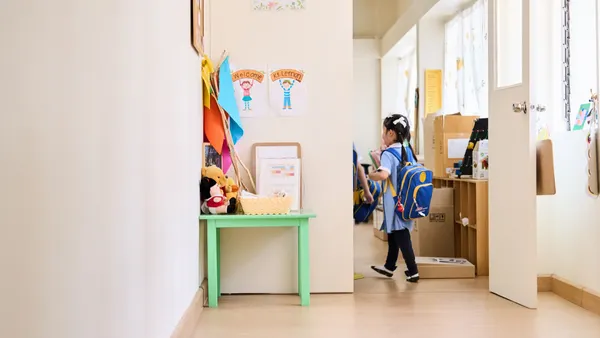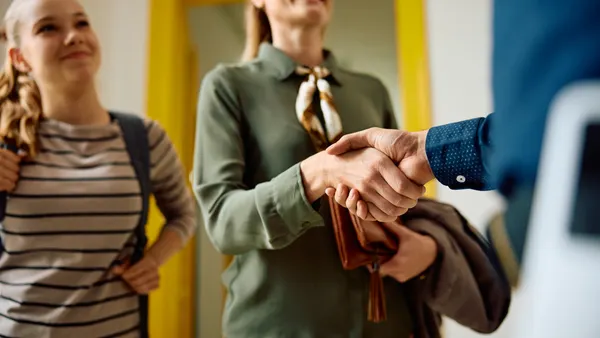Dive Brief:
- In a classroom in Australia's Wooranna Park Primary School, students use daily meditation to help them take a break, according to an Edutopia video.
- In the video, students listen to a guided meditation session on teacher Lizzie Moroney’s smartphone, which they can listen and follow. The class started with just one minute of meditation, but they've now progressed to a six-minute session.
- During the exercise, kids find a spot on the floor where they can be comfortable, close their eyes and take a few deep breaths. As the meditation winds down, they're asked to make small micro-movements, like shifting their hands and feet, to bring their bodies back into active, working time again.
Dive Insight:
Anyone with a smartphone has likely seen offers for guided meditation pop up on the App Store. This movement, which centers on increasing someone’s focus and awareness, is growing in popularity, with four out of 10 adults in the U.S. now saying they meditate at least once a week, according to SAGE Business Researcher.
Bringing this practice into schools, then, is hardly a surprise, as educators look to weave it into classroom culture. Educators and administrators have a plethora of online resources, including apps, to help them guide students during a designated break time. Doing so may do more than offer children a respite from school stressors — it may also help them develop social and emotional skills, according to a paper that examined 14 studies on the use of mindfulness programs in the K-12 space.
The paper’s authors found that not only do teachers benefit from mindfulness training, but the practice can also help them strengthen their relationships with students and their students’ school experiences.
“School-based mindfulness training appears to offer a means for students to cultivate attentional skills as well as an array of other aptitudes that may enhance their capacity to cope with their psychosocial as well as academic challenges,” authors wrote in the paper, “Integrating Mindfulness of Training into K-12 Education: Fostering the Resilience of Teachers and Students.” “Potential benefits include: fostering pro-social behavior via strengthening self-regulation and impulse control; alleviating the effects of stress that obstruct learning; and providing a skill set that promotes brain hygiene, and physical and emotional well-being across the life span.”
The benefits of guided meditation are even touted by UCLA’s School of Medicine, which promotes meditation centers on campus where any enrolled UCLA student can drop-in for 30-minute meditation sessions. There are also meditation audio files students can download through the UCLA Mindful Awareness Research Center.
Giving students a way to take a break during the school day is accepted at the elementary school level: We call it recess. Having older students take recess during their day, whether that’s physical or mental, is something all schools can arguably afford to do for a few minutes, particularly if the time helps them to rekindle their focus for the learning ahead.












